
Copyright © 2011 LITUANUS Foundation, Inc.
Volume 57, No.2 - Summer 2011
Editor of this issue: Violeta Kelertas
 LITHUANIAN
QUARTERLY JOURNAL OF ARTS AND SCIENCES
|
ISSN
0024-5089
Copyright © 2011 LITUANUS Foundation, Inc. |
|
Volume 57, No.2 - Summer 2011 Editor of this issue: Violeta Kelertas |
Art as a Witness
Sculptor Mindaugas Navakas
ELONA LUBYTĖ
DR. ELONA LUBYTĖ, Art critic, Curator of Lithuanian contemporary sculpture in the Lithuanian Art Museum, Lecturer at the UNESCO Chair for Culture Management and Culture Policy of Vilnius Academy of Fine Arts, Member of AICA (Lithuanian branch).
Sculptor
Mindaugas Navakas
Navakas’s worldview and motivation are closely related to the popular political activism associated with “1968.” His civic position is one of a critical social activist who rejects any kind of conformity. He was always publicly outspoken, whether playing in Kęstutis Antanėlis’s rock band in Soviet times or voluntarily participating in national security activities during the first years of independence. Speaking against the romanticized relationship between the artist and society, he denounced the unwillingness of the Lithuanian Artists Association to adopt liberal-democratic principles (He quit the association in 1993). He criticized the classical educational approach that Vilnius Art Academy takes with its students.
Navakas’s oeuvre is also marked by a strong-willed consistency. Reflecting the world in aesthetic categories, the sculptor seeks to embody intuitive senses in three-dimensions, to materialize them. This task makes the artist a ruminative technologist, constantly expanding the limits of knowledge, creative decisions, and cultural associations.
Navakas as a sculptor, as an architect of form and space, has always been interested in the postmodern dialogue of cultural meanings and intensely fluid forms that are created between site (public, institutional or alternative) and the associated piece of art (sculpture, object, installation or projection) during the production process. In this dialogue, there lurks a fusion between metaphysical threat, existential anxiety and frivolity, and irony. With each work, while overcoming the creative for himself” (for example, Vilnius Note Book 1 [1981–1985] the ironically postmodern project that proposed Situationist Style habitation, through sculpture, of Soviet-era public spaces).
A closer look at Navakas’s recent work attests to his tireless and consistent vitality as a technologist and researcher. He is loyal to hand-sculpted local granite boulders that he first encountered in 1977, when attending a granite sculpture symposium in Klaipėda. Moreover, Navakas is constantly replenishing his arsenal of expression; he confronts unexpected elements of culture, nature, and industry; he does not succumb to the consumer neurosis of the post-command economy society, and he makes its cult objects, commercial goods, into material for creative remakes.
Equipped with a granite chisel and a diamond-tipped drill that penetrates rock crystal, as well as with a camera and other tools, Navakas remains an “’unclassified’ artist, with a European ‘quality certificate’.1”
Elona Lubytė in Conversation with Mindaugas Navakas2
How does a contemporary artist get involved in the process of change? By choosing the standpoint of romantic distinction or independent survival? As one of the challenges of the new twenty-first century,3 an intellectual worker independent of politics, power and economic crises must organize himself and learn when and how to change. Today, he is mobile and free to choose, since his “production tools” – knowledge and skills – are at his personal disposal. However, changes are still regarded as more like death or taxes: they are considered unwelcome and delayed as long as possible. On the other hand, in periods of upheaval, like the present one, shifts and changes are considered a norm. Certainly, they are painful and risky and require a lot of hard work. In such periods only the leaders survive. Is the struggle with challenges part of an artist’s daily creative process?
Elona Lubytė:
— How does an
artist experience constant changes?
Mindaugas
Navakas:
— It must have been fun to live in the times of Ptolemy. The
earth was flat and stable – the center of the Universe. There
is
a well-known engraving representing a man at the edge of the
Earth, sticking his head through a hole in the vault of heaven
and admiring the constellations passing by. I wonder if he had
made the hole himself or had found it, ready made by someone
else. This question is going to torture me from now on. No
wonder Galileo caused such indignation. It must feel horrible
when you realize that you are jumping on some ball flying at
jet-speed and spinning around its axis. Probably, since then, we
secretly desire to wake up from this nightmare. Another reason
to hate change is the incessant race that goes on in our life. As
soon as we feel that we are losing our strength and someone
else is hot on our heels, we want to shout – stop,
it’s the finish
line! Unfortunately, the race never ends. “Kitty kitty, why
are you shaking, little pussy, you will die!”4 Constant
change
is one of the very few remaining stable things. The best album
by Jimmy Hendrix is titled Them
Changes. In this album, Buddy
Miles, a black drummer of imposing bulk and mass, sings in
a high-pitched tenor the blues number titled
“Changes.” It’s a
shame I haven’t seen it live.
— And how does the constant
process of change influence an artist’s
world outlook?
— I’d prefer that it should happen in the direction
of clarity and
higher precision, but most often, the changes have a frustrating
effect. Rembrandt was not crushed by hardship as an artist, but
he was Rembrandt! Many talented guys were crushed by hardship,
and the names of many others are gone with the wind.
Conformism is not a world outlook. To my mind, creation is an
instinct! The first impulse that gives rise to creation is intuitive.
The ideological motivation and self-control is secondary, but
its presence, the participation of both elements in the creative
process, is desirable.
— Is it possible to trace what
impulse has given rise to an artwork?
Let’s say, the cycle of sculptural objects constructed from
Chinese ceramic
and sanitary delftware displayed at the exhibition?
— Most probably, the impulse was a huge Baroque tile stove
on elegant legs, which I saw standing in the center of a room
at Kadriorg Palace in Tallinn in 1973 or 1975. Empress Catherine
once used to warm herself by this stove. However, you
can never tell with this impulse. Every day your gaze flashes
by a thousand shapes appearing in the visible field, but gets
captured by very few. The point is why it gets captured.
— Can you explain why, from among
thousands of goods on the supermarket
shelves, your gaze was captured by these particular objects
referring to globalization and consumer society?
— A supermarket shelf comes by accident, because, as I
already
mentioned, I got “captured.” All these objects have
been remade,
and most of them have been put through a new technological
cycle – fired, glazed. They are raw material rather than
an object with independent meaning. This process can be compared
with the production of sculpture from sheet metal. Sheet
metal is not found in nature; it is iron ore that is mined.
— Is this “getting
captured” constant or changeable?
— For some time now, I have been trying to use the
possibilities
offered to me by the context (circumstances). It means that,
quite often, I must alter my preconceptions and sometimes
even start everything anew. What is important in this exhibition
is the space densely filled with information, the hall lavishly
decorated in the Eclectic Style rather than the institution
itself. I try to develop a side story referring to the topic offered
by the site.
— What is more important, the
process of remaking or a remade object?
Let’s say, the installation with the old truck tent
– why has it been
chosen from a thousand objects? It is a kind of neo-brutal reference to
the infinite horizons of the world that have opened before us, general
transit, migration and lack of security changing the romantic attitude
toward travel experience.
— I can only say that I liked it. It is flexible, firm and
windresistant.
I’m not so keen to find out why. It is enough that I
got captured by it and, having chosen it as raw material,
started
remaking it.
— Let’s return to the
question about an artist’s stance in the environment
of challenges and changes: does he adapt himself, does he try not
to notice them, or does he try to become a leader?
— The answer is related to world outlooks. In my opinion, in
the universal court, process art is a witness rather than a judge.
A fragmented, changing and moving reality is a live and vital
reality. What is stable may be stagnant, frozen, and dead. The
social reality of parliamentary democracy is an arguing, quarrelling,
constantly negotiating and renegotiating, dynamically
developing reality. But I’m not interested in social issues
in my
art practice. I find artists who analyze social topics naïve,
since
they imagine that they can change the world. The twentieth
century abounds in examples of the naïve engagement of artists
in social life, which ended badly, either for the artists, or for
society, or both.
— What is the world outlook of an
artist who is not naïve?
— An artist who is not naïve is a Stoic, from the
viewpoint of
the ancient Greek tradition.
— And how is it expressed today?
— It is expressed in persistence in doing your work, without
regard to unfavorable circumstances. An artist’s aim is to
reflect
on the world in aesthetic categories. Unlike applied art,
fine art does not aim to satisfy the client’s tastes. The
question
is one of totally different aims, in the presence of which art becomes
a struggle for survival.
— Can we regard this attitude as a
small personal challenge to the
environment?
— A challenge is something that requires putting forth more
effort than usual, facing an obstacle larger than usual. Artistic
creation, as I have mentioned, is an instinct, and this often
helps to conquer obstacles larger than usual.
— If an artist seeking to solve
social issues is naïve, then what issues
should be solved by an artist who is not naïve?
— Personal issues, but in terms of subconsciousness rather
than on a biographical level. Personal experience is a kind of
pool ball that hits other balls in a state of equilibrium. A
pinch of fun is very important to me. I wouldn’t
like to educate or
convince anybody.
— Should it be related to the
restless/fidgety nature of an artist?
— The category of anxiety is crucial here. Anxiety is always
present. It is hardly related to exterior changes or an unstable
environment, it is deep, existential. It is an important impulse,
an engine in action, a constant escort. I came to the conclusion
that creation is little related to the artist’s peace of
mind. Perhaps
it is the curse of the artist – you are doomed to be in an
intermediate state, because if you leave this state, you may lose
your creative impulse. But then, the world would be a bit more
boring.
— However, doesn’t an
artist conveying personal experience in his
work also reflect some generally urgent issues?
— I think it is a romantic utopia. As I said, art is a
witness rather
than a judge. It is nice to observe it in the past tense, and
that’s
what museums are for.
Translated by Aušra Simanavičiūtė
*
* *
MINDAUGAS NAVAKAS was born on January 24, 1952 in Kaunas and now works in Vilnius. In 1970-77 he studied Architecture and Sculpture at the State Institute of Art of the Lithuanian SSR, and taught sculpture there from 1977 to 1981. Since 1990 he has taught at the Sculpture Department of the Vilnius Academy of Fine Arts. Navakas has been holding exhibitions in Lithuania and abroad since 1977, including at the first Lithuanian National Pavilion at the 48th Venice Biennial in 1999.
Navakas has participated in numerous symposia in Lithuania, Germany, Finland, Korea, and Latvia, organized sculpture exhibitions in public spaces, and created site-specific works such as The Hook at the Art League, Vilnius, 1994; Reconnaissance in Helersdorf, Berlin, 1997–1998; Big Fish in Tranoy/Hammaroy, Norway, 2006; and others. His awards include the Herder Prize in 1995, the National Prize for Culture and Art of the Republic of Lithuania in 1999, and the Baltic Assembly Prize in 2004.
* * *
Notes:
1 Giedrė Jankevičiūtė, “An ‘Unclassfied’
Artist with a European ‘Quality
Certificate’,” in Kultūros barai,
2000, No. 1, p. 18.
2 “Art as a Witness: An Interview with Mindaugas Navakas, by
Elona Lubytė,” in Interviu,
2006, No. 5, 12–13, 41–40.
3 Peter F. Drucker. Management
Challenges for the 21st Century. Butterworth-Heinemann,
paperback edition, 2002.
4 Kostas Kubilinskas (1923-1962), Lithuanian lyrical poet who mainly
wrote for children.
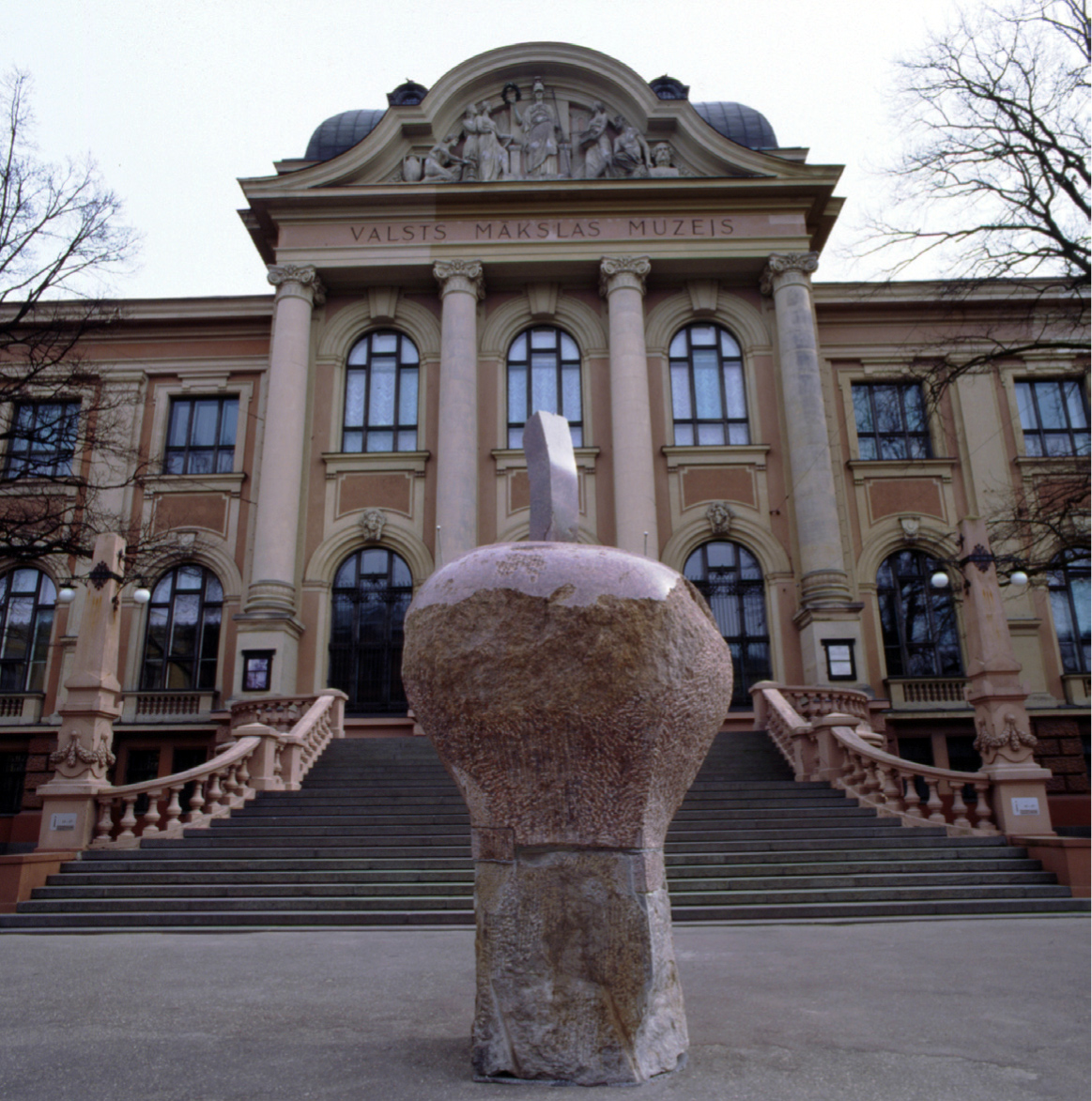
Mindaugas Navakas. Grand
Vase, 2005.
Polished and chiselled granite, 450 cm x 250 cm x 200 cm.
“R Works,” Latvian National Museum of Art, Riga,
2006.
Photo by Arūnas Baltėnas
Photos by Mindaugas Navakas:
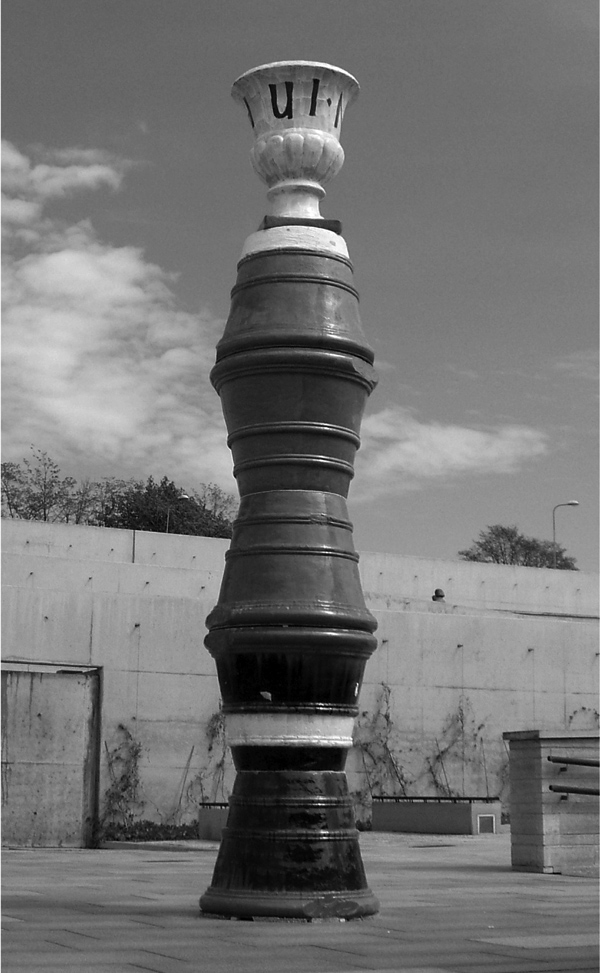
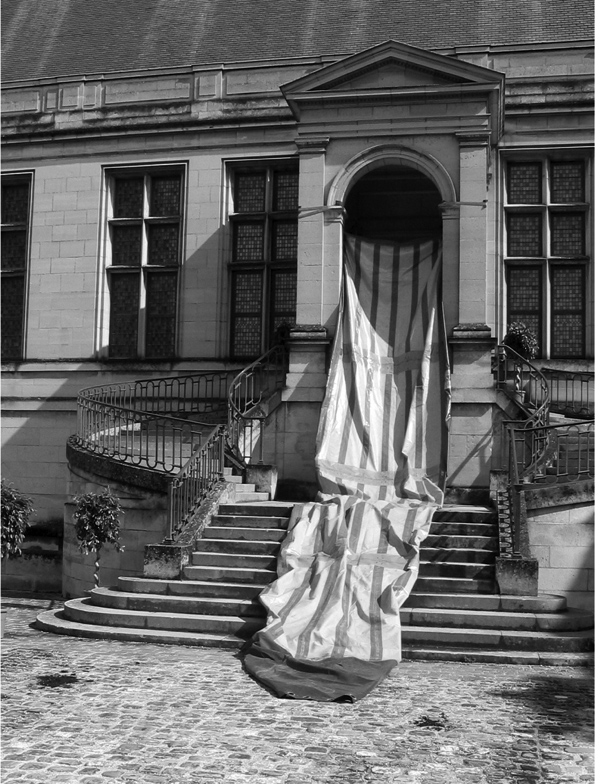
Folded V.
Used truck canopy (polyvinyl acetate/polyester), webbing belts, rope
1600.
Show “Ex voto,” Reims Palais du
Tau, Reims, France, 2008.
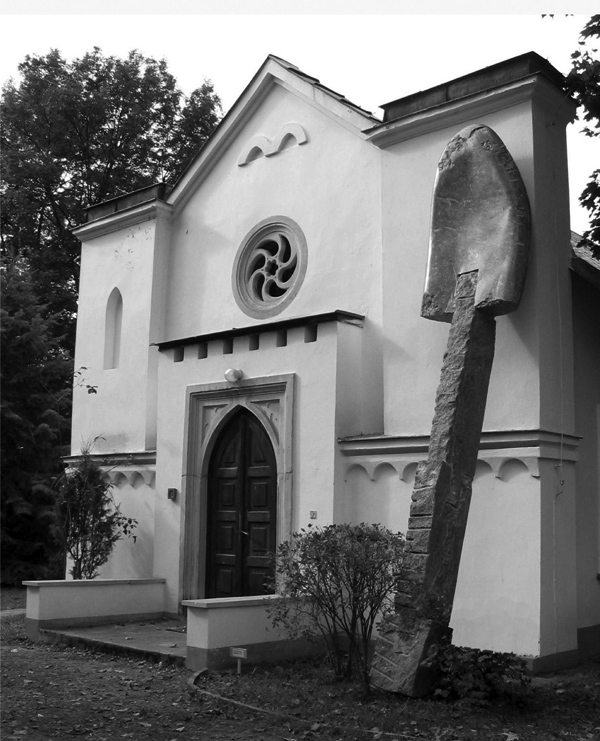
Red. Polished and split granite, 520 cm x 120 cm x 70 cm, 2004.
Personal show, R–O Works, Contemporary Sculpture Museum, Oronsk,
Poland, 2006.
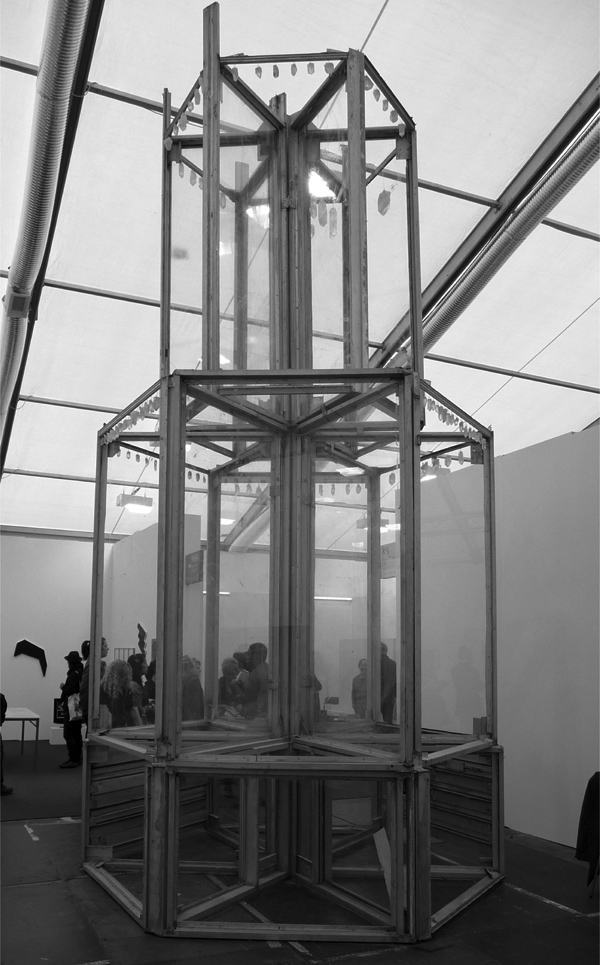
Smash the Windows, Snatch the Crystals, 2009.
Old CAC windows aluminumnprofiles, glass, rock crystals, 570 cm x 310 cm x310 cm.
“Frieze Art Fair 2009,” London.